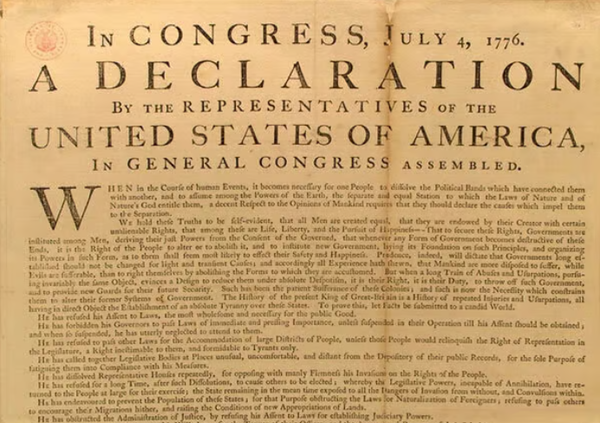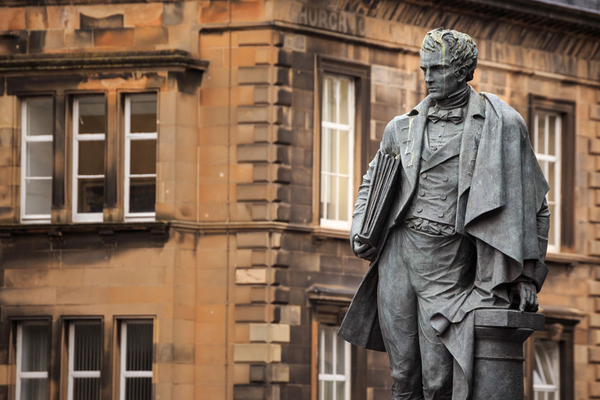She can see 100 times more colors than the average person

From Popular Science: "When Concetta Antico looks at a leaf, she sees much more than just green. “Around the edge I’ll see orange or red or purple in the shadow; you might see dark green but I’ll see violet, turquoise, blue,” she said. “It’s like a mosaic of color.” Antico doesn’t just perceive these colors because she’s an artist who paints in the impressionist style. She’s also a tetrachromat, which means that she has more receptors in her eyes to absorb color than the average person. The difference lies in Antico’s cones, structures in the eyes that are calibrated to absorb particular wavelengths of light and transmit them to the brain. The average person has three cones, which enables him to see about one million colors. But Antico has four cones, so her eyes are capable of picking up dimensions and nuances of color—an estimated 100 million of them—that the average person cannot. “It’s shocking to me how little color people are seeing,” she said.
He has climbed Mount Everest every year since 1994 and holds the record at 29 times

From the BBC: "Kami Rita Sherpa, 54, scaled the world's tallest mountain for a 29th time. Already the world-record holder, he beat his own landmark in setting the new standard. A guide for over two decades, he first climbed the summit in 1994 and has made the peak almost every year since. The climbing season has just started on Mount Everest, which is expecting hundreds of climbers to make the trek over the coming weeks. Sherpa reached the 29,000ft summit on Sunday. Last week, he had posted to Instagram from Everest base camp saying he was back to try a 29th summit "to the top of the world". The sherpa has said his climbs are just work - but he did do the trek twice last year to reclaim his crown from long-time rival and compatriot Pasang Dawa Sherpa."
The look of The Joker was based on a 1928 movie called The Man Who Laughs

From Wikipedia: "The Man Who Laughs is a 1928 American film directed by the German Expressionist filmmaker Paul Leni. The film is an adaptation of Victor Hugo's 1869 novel of the same name, and stars Mary Philbin as the blind Dea and Conrad Veidt as Gwynplaine. The film is known for the grotesque grin on the character Gwynplaine's face, which often leads it to be classified as a horror film. Film critic Roger Ebert stated "The Man Who Laughs is a melodrama, at times even a swashbuckler, but so steeped in expressionist gloom that it plays like a horror film." The film was one of the earliest Universal Pictures films that made the transition from silent films to sound films using the Movietone sound system introduced by William Fox. Today, the film is best known as the visual inspiration for the classic comic book supervillain, the Joker."
Editor's note: If you like this newsletter, please share it with someone else. And if you really like it, perhaps you could subscribe, or contribute something via my Patreon. Thanks for being a reader!
A geologist has found the place pictured in the background of the Mona Lisa

From The Guardian: "The landscape behind Leonardo da Vinci’s Mona Lisa has sparked endless debate, with some art historians suggesting the view was imaginary and idealised, and others claiming various links to specific Italian locations. Now a geologist and Renaissance art historian believes she has finally solved the mystery in one of the world’s most famous paintings. Ann Pizzorusso has combined her two fields of expertise to suggest that Leonardo painted several recognisable features of Lecco, on the shores of Lake Como in the Lombardy region of northern Italy. Pizzorusso has matched Leonardo’s bridge, the mountain range and the lake in the Mona Lisa to Lecco’s 14th-century Azzone Visconti bridge, the south-western Alps overlooking the area and Lake Garlate, which Leonardo is known to have visited 500 years ago."
She figured out what stars are made of and then her discovery was stolen

From History Today: "Physics was being overturned by relativity and quantum mechanics, and Payne seized the opportunity to test drive the recent theory of an Indian astronomer. By introducing this state-of-the-art mathematical analysis, she revolutionised Harvard astronomy. The Observatory’s plates carried thousands of photographic images generated by a spectrometer. A line’s position among the colours revealed a particular element, while its intensity was related to two further quantities – the element’s abundance in a star and its temperature. Payne’s research had to be approved by Henry Norris Russell, director of the Observatory at Princeton and notorious for falling asleep during his own lectures. Four years later he produced his own book, announcing that the sun consisted of 98 per cent helium and hydrogen. Buried at the end was a small acknowledgement of a ‘gratifying agreement’ with Payne’s results. Until recently, this startling discovery was routinely attributed to him rather than to Payne."
An extremely rare chunk of Tyrian purple dye from the Roman era has been found

From Neatorama: "A chunk of Tyrian purple dye has been found in the archaeological dig on the grounds of the Carlisle Cricket Club. The dye was found in the remnants of a Roman bathhouse dating back to the third century CE, during the reign of Roman emperor Septimius Severus. It is a rare find because Tyrian purple, also called imperial purple, was such an expensive dye that it was restricted to royalty. Tyrian purple was so expensive because it was made from the glands of murex snails, and it took about a quarter million snails to produce one ounce of dye. The dye gland can only be extracted from a living snail or the dye will deteriorate immediately, so each snail must be kept alive until the glands can be harvested, one by one. The smell of the dye was remarkably bad, so emperors who wore Tyrian purple had to be heavily perfumed to disguise it."
A Chinese fireworks artist created this stairway to heaven effect in memory of his grandmother
As a tribute to his grandmother, a Chinese artist and pyrotechnic expert created this stairway to Heaven. Stunning. pic.twitter.com/aNmc7YGcKf
— Juanita Broaddrick (@atensnut) May 13, 2024
Acknowledgements: I find a lot of these links myself, but I also get some from other newsletters that I rely on as "serendipity engines," such as The Morning News from Rosecrans Baldwin and Andrew Womack, Jodi Ettenberg's Curious About Everything, Dan Lewis's Now I Know, Robert Cottrell and Caroline Crampton's The Browser, Clive Thompson's Linkfest, Noah Brier and Colin Nagy's Why Is This Interesting, Maria Popova's The Marginalian, Sheehan Quirke AKA The Cultural Tutor, the Smithsonian magazine, and JSTOR Daily. If you come across something interesting that you think should be included here, please feel free to email me at mathew @ mathewingram dot com



